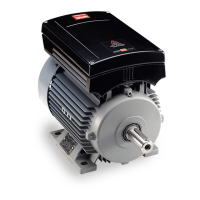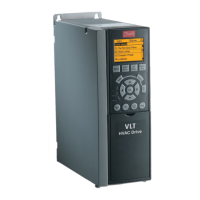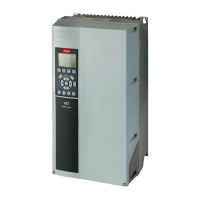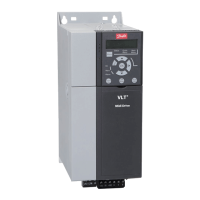VLT
®
FCM Series
Programming
and a byte that gives the address (ADR). Then follows a
number of databytes (variable, depending on telegram
type). The telegram ends with a data control byte (BCC).
Telegram length (LGE)
The telegram length is the number of databytes plus
address byte ADR plus data control byte BCC.
Telegrams with 4 databytes have a length of:
LGE=4+1+1=6bytes
Telegrams with 12 databytes have a length of:
LGE=12+1+1=14bytes
V
LT address (ADR)
Two different address formats are used:
1. Siemens USS protocol address format:
Bit 7 = 0
Bit6isnotused
Bit 5 = 1: Broadcast, address bits (0-4) are not used
Bit 5 = 0: No Broadcast
Bits0-4=VLTaddress1-31
2. Danfoss format:
Bit 7 = 1
Bits 0-6 = VLT address 1-127 (0 = Broadcast)
D
ata control byte (BCC)
The data control byte can best be explained by
means of an example: Before the first sign of the
telegram is received, BCC = 0.
After the first sign has been received:
BCC
NEW
=BCC
OLD
EXOR "first byte"
(EXOR = exclusive-or gate)
BCC
OLD
=00000000
EXOR
"
first byte" = 0 0 0 0 0 0 1 0 (02H)
BCC
NEW
=00000010
Each additional, subsequent byte is gated by
BCC
OLD
EXOR and gives a new BCC
NEW
, e.g.:
BCC
OLD
=00000010
EXOR
"
second byte" = 1 1 0 1 0 1 1 0 (D6H)
BCC
NEW
=11010100
The result after the last received sign is BCC.
■ Databytes
The block of databytes is divided into two
smaller blocks:
1. Parameter bytes used for transferred parameters
between master and slave
2. Process bytes, covering
- Control word and reference value (from
master to slave)
- Status word and present output frequency
(from slave to master)
This structure applies to both the control
telegram (master → slave) and the reply
telegram (slave → master).
There are two types of telegrams:
- with 12 bytes built up as shown above, with
parameter and process block
- with four bytes, which is the process block
from the 12 byte telegram
1
. Parameter bytes
Commands and replies (AK)
Bits no. 12-15 are used for transmitting commands
from master to slave and the slave’s processed
reply back to the master.
Commands master → slave:
MG.03.H3.02 - VLT is a registered Danfoss trademark
79
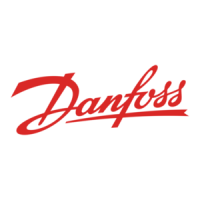
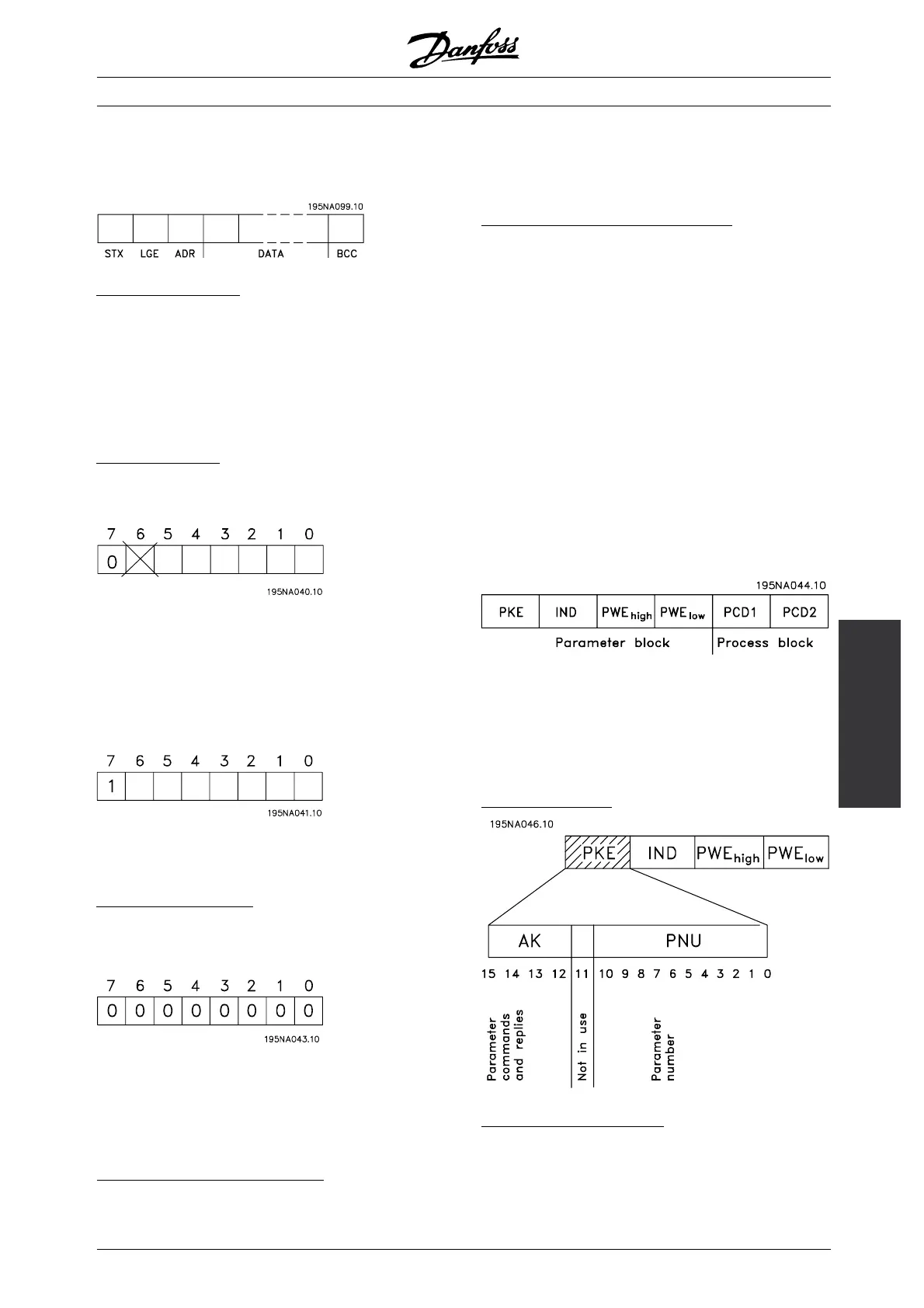